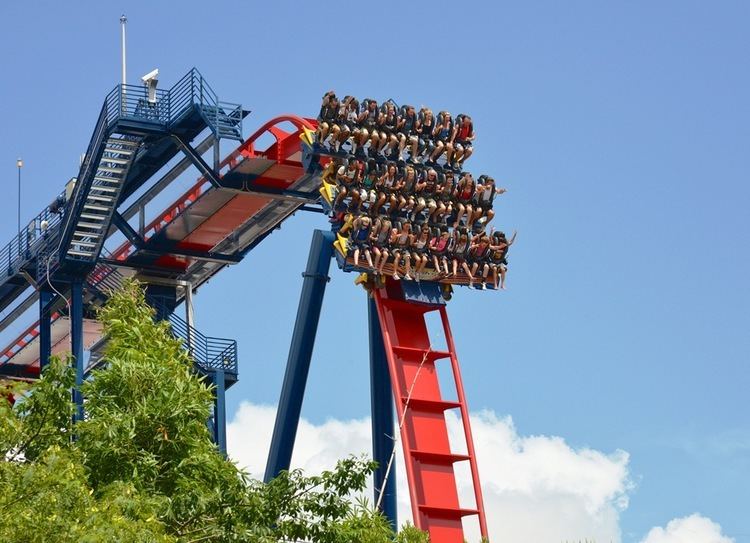Status In Production No. of installations 12 Rows 2 - 3 | First manufactured 1998 Manufacturer Bolliger & Mabillard | |
 | ||
Vehicle type Floorless or normal seats located above the track | ||
The Dive Coaster is a steel roller coaster manufactured by Bolliger & Mabillard where riders experience a moment of free-falling with at least one 90-degree drop. Unlike other roller coasters where the lift hill takes the train directly to the first drop, a Dive Coaster lift hill leads to a flat section of track followed by a holding brake which stops the train just as it enters the vertical drop. After a few seconds, the train is released into the drop.
Contents

Development of the Dive Coaster began between 1994 and 1995 with Oblivion at Alton Towers opening on March 14, 1998, making it the world's first Dive Coaster. The trains for this type of coaster are relatively short consisting of two to three cars. Bolliger & Mabillard have recently begun to also use floorless trains on this model to enhance the experience. As of May 2016, ten Dive Coasters have been built, with the newest being Valravn at Cedar Point.

Dive coasters explained
History

According to Walter Bolliger, development of the Dive Coaster began between 1994 and 1995. On March 14, 1998, the world's first Dive Coaster, Oblivion, opened at Alton Towers. Though Oblivion is classified as a Dive Coaster, it does not have a true vertical drop as the drop angle is 88.8-degrees. Two years later, the second Dive Coaster built, Diving Machine G5, opened at Janfusun Fancyworld and also does not have a vertical drop. In 2005, SheiKra opened at Busch Gardens Tampa Bay and was the first Dive Coaster to feature a 90-degree drop and a splashdown element. In 2007, Busch Gardens Williamsburg announced that Griffon would be the first ever Dive Coaster to feature floorless trains and SheiKra would have its trains replaced with floorless ones. In 2011, the first 'mini' Dive Coaster opened at Heide Park Resort, named Krake. Unlike other Dive Coasters, Krake has smaller trains consisting of three rows of six riders.
Design

The design of a Dive Coaster can vary slightly from one to another. Depending on the amusement park's request, one row on the train can seat anywhere from 6 to 10 riders. Stadium seating is also used to give every rider a clear view. Next, compared to standard Bolliger & Mabillard 4 abreast cars, because of the extra weight of each car on a Dive Coaster, the size of the track must be larger than other B&M models (such as the Hyper Coaster) to support the weight. At the top of the primary vertical drop, a braking system holds the train for 3 to 5 seconds, giving riders a view of the drop ahead before being released into the drop.

In the station, Dive Coasters that use non-floorless trains simply use a standard station. With Dive Coasters that use floorless trains, in order to allow riders to load and unload the train, a movable floor is necessary. Because the front row has nothing in front of it to stop riders from walking over the edge of the station, a gate is placed in front of the train to prevent this from happening. Once all the over-the-shoulder restraints are locked, the gate opens and the floor separates into several pieces and moves underneath the station. When the next train enters the station, the gate is closed and the floors are brought back up where the next riders board.
Installations
Bolliger & Mabillard has built ten Dive Coasters with two to be opened in 2017 and 2018. The roller coasters are listed in order of opening dates.
